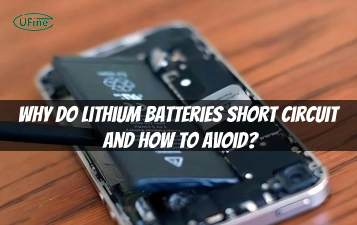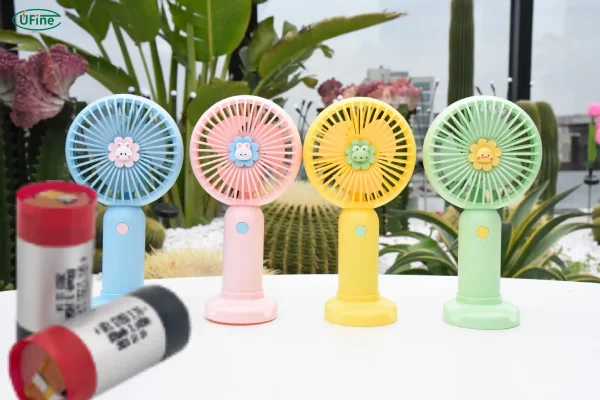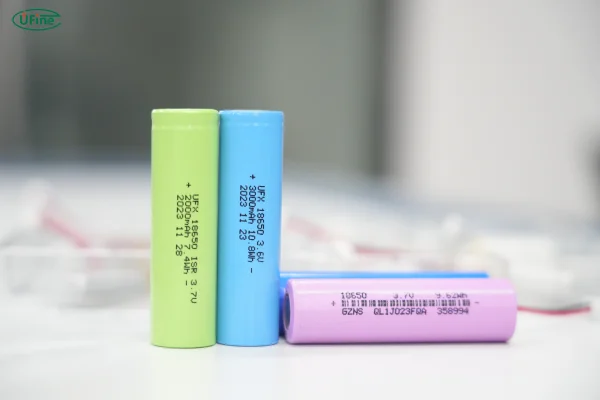
- Part 1. What kind of battery does a portable electric fan need?
- Part 2. What battery powers a portable electric fan?
- Part 3. Lithium polymer portable electric fan battery
- Part 4. What affects the life of a portable electric fan battery?
- Part 5. Charger and plug
- Part 6. Charging and maintenance tips
- Part 7. Final words
- Part 8. FAQs
Portable electric fans are must-have gadgets for beating the heat, whether you’re commuting, camping, or relaxing at home. But what powers these handy devices? The battery is the true backbone of every portable fan, and understanding its types, performance, and care can make a big difference in your experience.
In this comprehensive guide, we’ll explore the different types of portable electric fan batteries, their characteristics, the factors affecting their lifespan, and tips for maintenance. By the end, you’ll have all the information you need to make an informed choice and keep your fan performing at its best.
Part 1. What kind of battery does a portable electric fan need?
A portable electric fan needs a battery that balances performance, durability, and safety. Since these fans are designed to be lightweight and portable, the battery must meet certain key criteria:
- Compact Size: The battery should be small enough to fit into the fan without adding unnecessary bulk.
- High Energy Density: It should provide sufficient power to keep the fan running for hours without frequent recharging.
- Rechargeable: Rechargeable batteries are eco-friendly and cost-effective, reducing the need for disposable options.
- Safety Features: The battery must include overcharge, overheat, and short-circuit protection to prevent potential hazards.
- Long Cycle Life: A durable battery that can endure hundreds of charge-discharge cycles ensures better value over time.
These characteristics make lithium-ion and lithium polymer batteries the most popular choices for portable electric fans.
Part 2. What battery powers a portable electric fan?
Portable electric fans use various types of batteries, each with unique advantages and drawbacks. Let’s examine the main options:
Alkaline Batteries
- Pros: Widely available and inexpensive.
- Cons: Non-rechargeable and have a limited runtime.
- Best For: Short-term use or emergency situations where recharging isn’t an option.
NiMH (Nickel-Metal Hydride) Batteries
- Pros: Rechargeable and more environmentally friendly than alkaline batteries.
- Cons: Shorter lifespan and prone to self-discharge when not in use.
- Best For: Budget-conscious users who need rechargeable options.
Lithium-Ion Batteries
- Pros: High energy density, long lifespan, and fast charging capabilities.
- Cons: More expensive than alkaline and NiMH batteries.
- Best For: Frequent users who prioritize reliability and performance.
Lithium Polymer Batteries
- Pros: Lightweight, flexible in shape, and safer due to lower chances of leakage.
- Cons: Slightly less energy-dense than lithium-ion batteries.
- Best For: Advanced portable fans with compact designs and long-lasting performance.
Key Takeaway: While alkaline and NiMH batteries are suitable for occasional use, lithium-ion and lithium polymer batteries dominate the market for their superior performance and reusability.
Part 3. Lithium polymer portable electric fan battery
Among the different options, lithium polymer (LiPo) batteries have gained immense popularity for powering portable electric fans. These batteries are lightweight and versatile, offering several advantages:
- Flexible Design: Unlike cylindrical lithium-ion cells, lithium polymer batteries can be shaped into various forms, making them ideal for slim or compact fan designs.
- Enhanced Safety: LiPo batteries are less likely to leak or catch fire, thanks to their solid polymer electrolyte.
- Fast Charging: They support rapid charging, allowing users to recharge their fans quickly.
- Steady Performance: These batteries provide consistent power output, ensuring smooth fan operation.
For those seeking customized solutions, Ufine Battery, a leading Chinese company with over 17 years of experience, offers tailor-made lithium batteries. Whether you need a specific size, capacity, or voltage, Ufine Battery can deliver high-quality options to meet your requirements. With their expertise, you can trust Ufine to provide safe, reliable, and efficient batteries for your portable electric fans. Contact Ufine Battery today!
Part 4. What affects the life of a portable electric fan battery?
Several factors influence how long a portable electric fan battery lasts, both in terms of daily use and overall lifespan. Let’s explore these factors:
- Charging Habits: Overcharging or undercharging can degrade the battery. Aim to unplug the charger once the battery reaches full capacity.
- Usage Intensity: Running the fan at maximum speed drains the battery faster, shortening its daily runtime.
- Temperature: High temperatures can damage the battery, while freezing conditions may reduce its performance temporarily.
- Storage Conditions: Storing the battery in a hot, humid, or damp environment can accelerate degradation.
- Age: All batteries lose capacity over time, even with proper care.
To maximize battery life, use the fan at medium settings when possible, store it in a cool, dry place, and follow recommended charging practices.
Part 5. Charger and plug
The type of charger and plug used with your portable electric fan battery can significantly impact its lifespan and performance.
Common Charger Types
- USB Chargers: Compatible with power banks, laptops, and wall adapters, USB chargers are the most versatile option.
- Dedicated Chargers: These are designed specifically for the fan model and ensure optimal charging.
- Universal Chargers: Useful for fans that use removable batteries, universal chargers can accommodate multiple battery types.
Plug Variants
- Standard Plugs: Common for wall charging, standard plugs deliver consistent power.
- Micro-USB/Type-C Ports: Increasingly popular due to their compact size and fast-charging capabilities.
Part 6. Charging and maintenance tips
Proper charging and maintenance can extend the life of your portable electric fan battery. Follow these tips:
- Charge Fully Before First Use: Ensure the battery is fully charged when you unbox the fan.
- Avoid Overcharging: Unplug the charger once the battery is full to prevent overheating.
- Use the Right Charger: Stick to the manufacturer-recommended charger for safety and efficiency.
- Store Properly: When not in use, store the battery in a cool, dry place.
- Recharge Periodically: If you’re not using the fan for a long time, recharge the battery every 2–3 months to maintain its health.
- Clean Contacts: Wipe the battery terminals and charger contacts regularly to ensure proper charging.
- Avoid Extreme Conditions: Keep the battery away from high heat or freezing temperatures.
Part 7. Final words
The portable electric fan battery plays a crucial role in ensuring your fan performs well. Choosing the right type, like lithium polymer, guarantees a balance of efficiency, safety, and durability. With proper care and the right charging habits, your battery will keep your fan running smoothly for years.
For premium lithium battery solutions, reach out to Ufine Battery, the trusted name in customized battery design. Stay cool, and let your fan work its magic!
Part 8. FAQs
-
What’s the best battery for a portable electric fan?
Lithium-ion or lithium polymer batteries are the best for their efficiency and long life. -
How long does a fully charged battery last?
It depends on the battery type and fan speed but typically ranges from 4 to 10 hours. -
Can I charge the fan with a power bank?
Yes, most portable fans with USB ports can be charged using a power bank. -
What happens if I overcharge the battery?
Overcharging can shorten the battery’s lifespan and lead to overheating. -
Can I replace the fan battery?
Yes, but ensure the replacement battery matches the original specifications. -
How do I know if my battery needs replacing?
If the fan runs for a much shorter time than usual, it’s time for a new battery. -
What is the average lifespan of a lithium-ion battery?
With proper care, it can last 2–5 years. -
Why does my fan battery heat up during use?
Slight heating is normal, but excessive heat could indicate a problem.
Related Tags:
More Articles

What Is the Lithium Battery Short Circuit?
What is the lithium battery short circuit? To understand a lithium battery short circuit, we first need to understand how the battery works.
How to Distinguish Battery Cells, Battery Modules, And Battery Packs?
Discover how battery cells, modules, and packs work, their engineering roles, and practical guidance for safe and efficient design.
What is the Difference Between Silver Zinc Battery vs. Lithium-ion Rechargeable?
Compare silver zinc and lithium-ion rechargeable batteries: energy density, cycle life, safety, cost, and uses in drones, medical devices, EVs, and electronics.
What are Watts and Watt Hours in Battery?
Understand watt vs watt-hour in batteries: key differences, how to calculate capacity, and why they matter. Includes free comparison table.
Best 10 Blood Pressure Monitor Battery Review: Finding the Most Reliable
Are you looking for a reliable Blood Pressure Monitor battery? Here is a complete guide with the top 10 best blood pressure monitor batteries.




